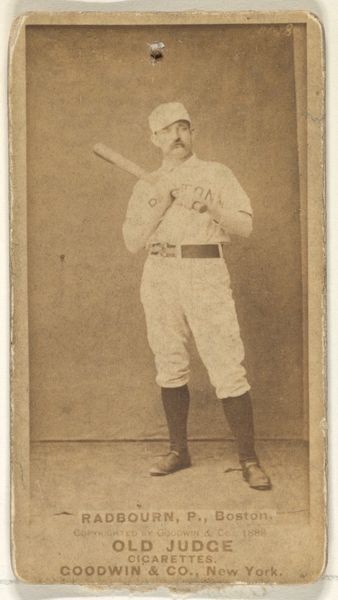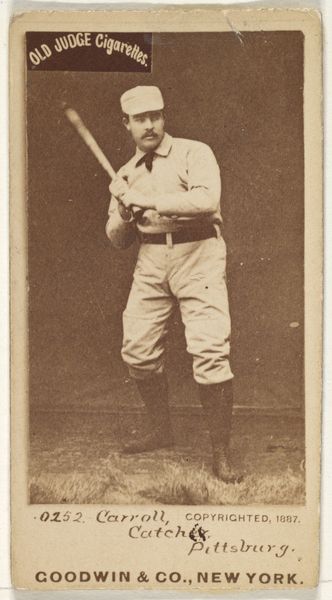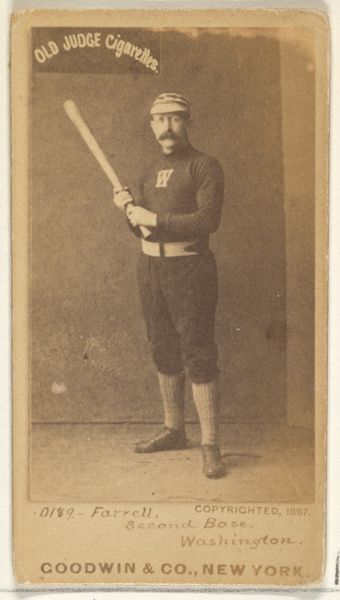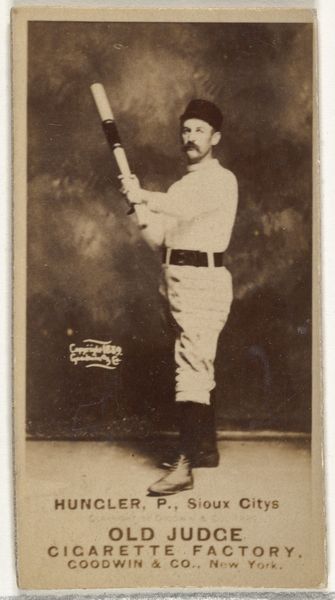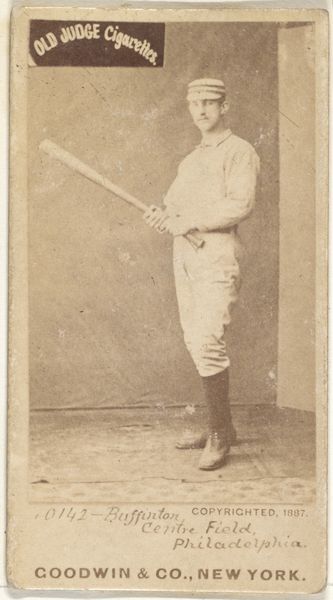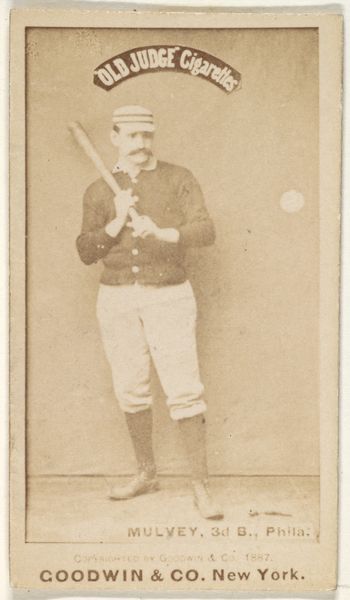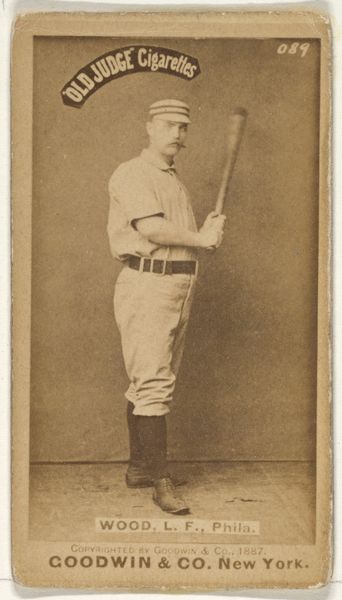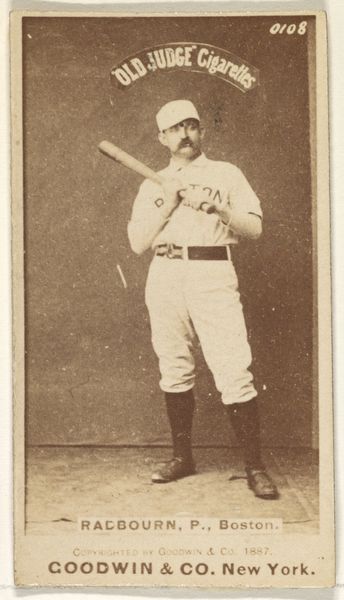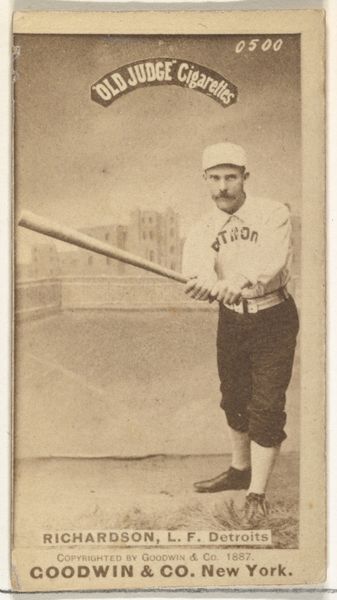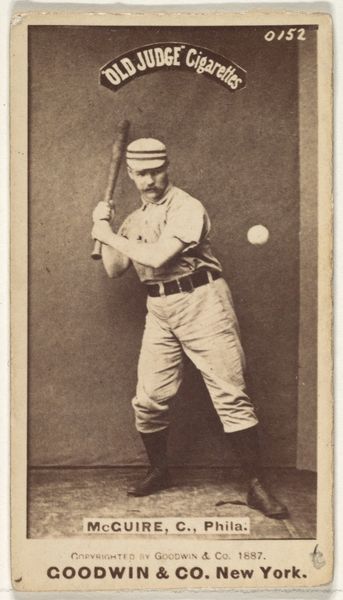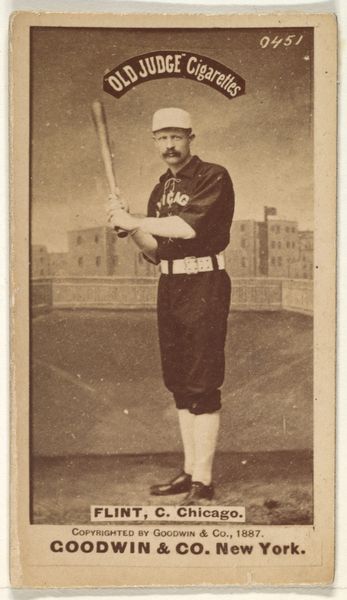
Samuel "Cliff" Clifford Carroll, Left Field, Washington Nationals, from the Old Judge series (N172) for Old Judge Cigarettes 1887
0:00
0:00
print, daguerreotype, photography, collotype, gelatin-silver-print
#
portrait
# print
#
daguerreotype
#
baseball
#
photography
#
historical photography
#
collotype
#
gelatin-silver-print
#
19th century
#
men
#
athlete
Dimensions: sheet: 2 11/16 x 1 3/8 in. (6.9 x 3.5 cm)
Copyright: Public Domain
Editor: Here we have "Samuel 'Cliff' Clifford Carroll, Left Field, Washington Nationals," a baseball card made in 1887 by Goodwin & Company. It's a striking gelatin-silver print that gives us such a clear view into the late 19th century! I'm immediately drawn to how this card seems to embody a sense of American masculinity at the time. How do you see it? Curator: That’s a perceptive observation. It's easy to view it solely as a historical artifact. However, consider how it actively participates in constructing and circulating notions of athleticism and national identity. What's implied when we see baseball presented within the same promotional frame as “Old Judge Cigarettes?" Doesn’t this suggest connections between leisure, labor, and perhaps even aspiration? Who was this card marketed to, and what ideas about "the good life" was it selling, beyond baseball and tobacco? Editor: Hmm, interesting. So, beyond simply depicting a baseball player, the image also presents certain cultural values associated with baseball and the ideal American man? The cigarette brand suggests a sort of sophisticated, leisurely lifestyle maybe? Curator: Exactly. This wasn't just about baseball. These cards circulated within a rapidly industrializing nation grappling with shifting gender roles, waves of immigration, and anxieties about leisure and labor. The image attempts to project a sense of stability and idealized masculinity— a white, athletic ideal at a time when definitions of American identity were becoming increasingly contested. Now, how might racial identity factor into who was included—or excluded— from this ideal? Editor: I see your point. Thinking about it through that lens definitely changes my perception of the image. I'm seeing more than just a baseball card; I'm seeing a document that's subtly promoting certain cultural values and reinforcing social hierarchies. Curator: Precisely. Art, even in the form of a baseball card, is never neutral. By analyzing its historical context and its relationship to contemporary social dynamics, we can gain a much deeper understanding of the messages it conveys and the values it promotes, then and now. Editor: That’s fascinating, it is important to unpack these seemingly simple images! Thanks for helping me to see all the underlying stories embedded in this photograph.
Comments
No comments
Be the first to comment and join the conversation on the ultimate creative platform.

